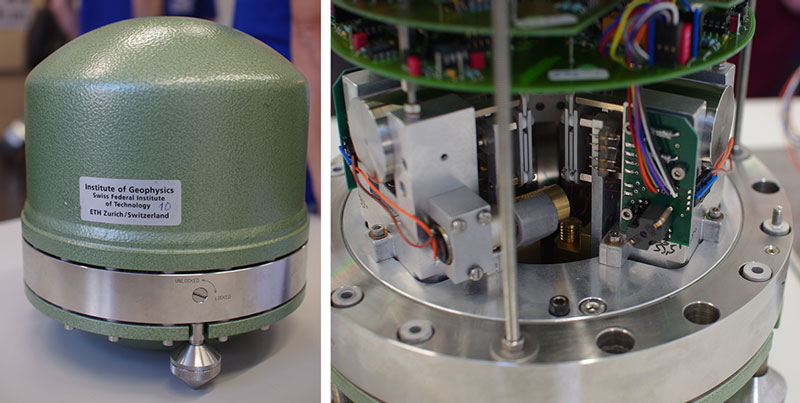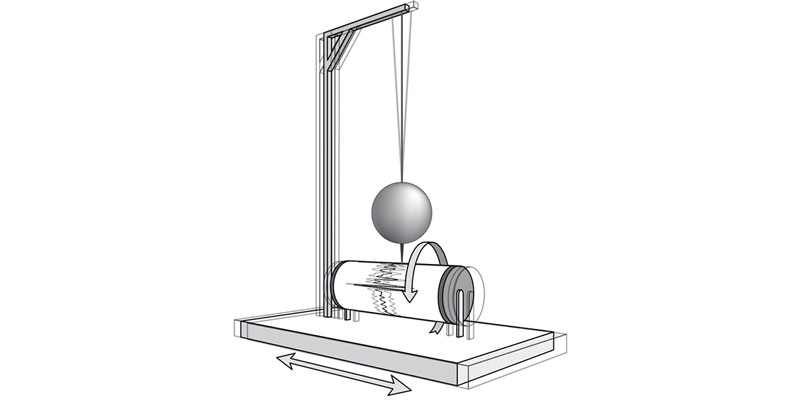A seismometer is an extremely sensitive electromechanical device used to measure ground movement in a particular area in the order of nanometres (millionths of a millimetre). The movement recorded on a time axis called a seismogram.
Earlier mechanical instruments were called seismographs. In 1922, Alfred de Quervain – a geophysicist and former director of the Swiss Seismological Service – explained the conventional principle of recording earthquake measurements as “[…] suspending a heavy body freely in such a fashion that it remains immobile as an inert mass during ground tremors”. Seismographs incorporated a stylus attached to the mass (and therefore also immobile) which traced ground movements onto, for example, a cylindrical sheet of paper, which rotated as the tremors occurred. Depicting all three axes (north-south, east-west and the vertical) required two horizontal and one vertical pendulum systems.
Nowadays, a seismometer is used to measure the current required to keep a magnetic mass as still as possible during ground tremors: this is known as a force-feedback system, and the force can be calculated from ground movements. The triaxial suspension mechanism means that all three axes can be measured using a single pendulum device (in the past, three separate pendulum masses were inclined against the vertical in the form of the edges of a cube standing on one of its corners).

